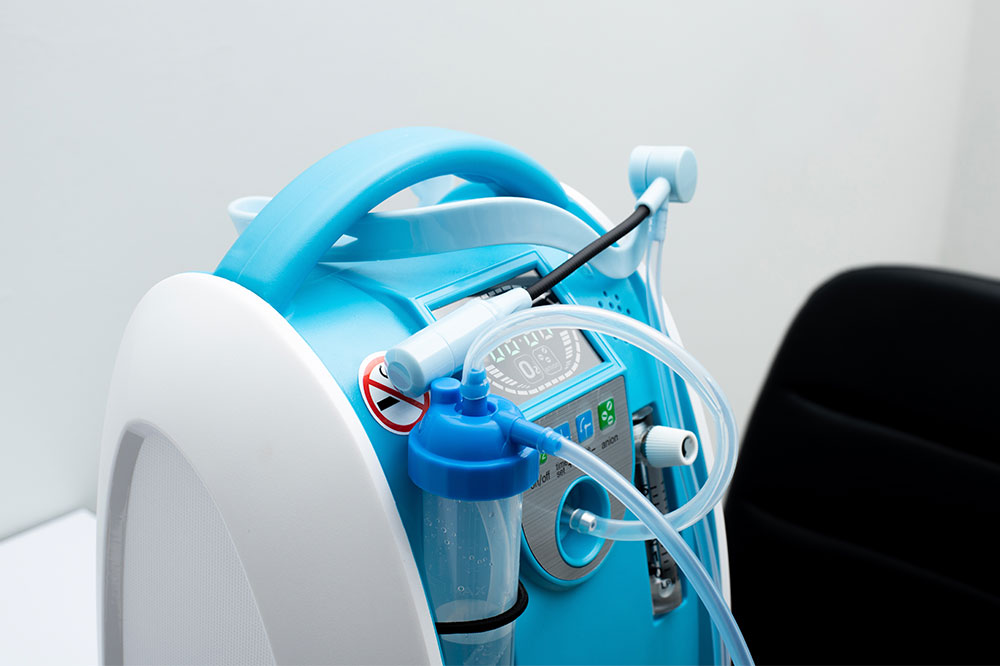Key Things to Know About Portable Oxygen Concentrators

A portable oxygen concentrator is an effective and compact solution for people affected by respiratory conditions. This medical device can help reduce the difficulty in breathing. The machine provides extra oxygen to the lungs, so it is usually prescribed when the oxygen levels in the blood drop way below what is considered normal. One should use oxygen concentrators after consulting an expert healthcare professional. Here is everything to know about the device:
What is a portable oxygen concentrator?
Portable oxygen concentrators are devices used by individuals who suffer from any type of respiratory condition or disorder. These machines help provide supplemental oxygen, making breathing easy for the individual. Portable concentrators are unlike traditional oxygen tanks as they offer more flexibility, and they eradicate the problem of having limited access to oxygen. The compact size of these concentrators makes them portable and allows the individual to maintain their quality of life while continuing with their daily routine. Other than disease-related use, the machine can also be recommended for things like altitude acclimatization, breathlessness, headaches, and jet lag.
How does it work?
Typically, the air we breathe has a greater amount of nitrogen and small amounts of oxygen. If one’s lungs work well, this concentration is not a problem. But, it could be an issue for those who experience trouble breathing due to respiratory conditions. A portable oxygen concentrator helps solve this problem. It purifies the air to ensure that the air sent to the lung primarily contains oxygen along with tiny amounts of nitrogen, making it easier for the individual to breathe. Most portable oxygen concentrators contain a battery that can be charged with the help of an electric plug. Some oxygen concentrators also come with an adapter that allows people to charge the machines while driving. The portable concentrator does not require refills and does not have a heavy tank. This means one will never run out of oxygen, even on the road.
Benefits
Here are some of the key benefits of a portable oxygen concentrator:
Ease of use: One of the biggest and most obvious advantages of a compact oxygen concentrator is that it is easy to use and completely portable. People can choose from several available options, each of which comes with different functionalities. Irrespective of the type of oxygen concentrator one gets, one does not have to spend a lot of time learning how to use it as they are all simple to operate. For instance, an oxygen concentrator comes with a control panel and easy buttons and controls for users of all ages. The panel allows users to control their oxygen intake and customize the amount based on their prescription. Additionally, the concentrators help people check their pulse flow and even alert the user if they do something incorrectly. The panel also shows the battery life and sends alerts to charge the device.
Flexibility: The portable oxygen concentrators are battery-operated. Most of them can run on AC/DC power source, which allows one to use the machine at all places that have an electrical outlet. Concentrators constantly pull the air around them and filter the nitrogen, so users do not have to worry about refills or changing tanks. So one can get a constant supply of oxygen without worrying about running out of oxygen after an hour or two. This is exactly what makes this machine a great investment, especially for those who have respiratory diseases and other similar conditions.
Portability: The machines are discreet and compact, making them fit into luggage to be carried anywhere. This also makes it possible for those who have an active lifestyle to have the convenience of using this machine on the move.
Highly customizable: The oxygen therapy prescribed by doctors is based on the lifestyle and needs of the individual. Some people may need to use an oxygen concentrator to tackle the symptoms of their respiratory and breathing conditions, while others may need it for physical activity and to improve stamina. What makes portable machines convenient is that they can be customized to adapt to individual needs. This is something that cannot be achieved with a traditional oxygen tank and what sets POCs apart.
Improved sleep: While sleeping, the oxygen saturation levels in the body tend to drop. This is something that can also happen to those with healthy lungs. If one is affected by a respiratory condition such as COPD, they may experience a phenomenon called transient nocturnal desaturation. This is when the oxygen concentration levels in the blood drop lower than usual while sleeping, potentially affecting the individual’s ability to sleep well. The lack of oxygen can lead to a ton of health issues. To tackle this, doctors may prescribe oxygen therapy to improve oxygen concentration levels and one’s overall sleep quality.
Safe to use: Traditional oxygen tanks have an increased risk of pure oxygen leaks and fire hazards. POCs, on the other hand, are fairly safe to use. The portable machines process oxygen from one’s surroundings. So, they do not carry nearly as much oxygen as a tank or cylinder and pose a lesser risk of accidents.
Some of the other benefits of using portable oxygen concentrators include improved mental alertness, better organ function, and even a boost in stamina.
Cost
While portable oxygen concentrators have many benefits, they can be expensive machines to own. However, a used concentrator typically costs anywhere between $800 to $2,000. This is roughly one-third of the cost of a new portable concentrator, which can go up to $4500, depending on the brand you choose. But, it is essential to note that even though this is an expensive product, a traditional oxygen tank can also prove costly as it is accompanied by maintenance costs, refill costs, and other expenses.






